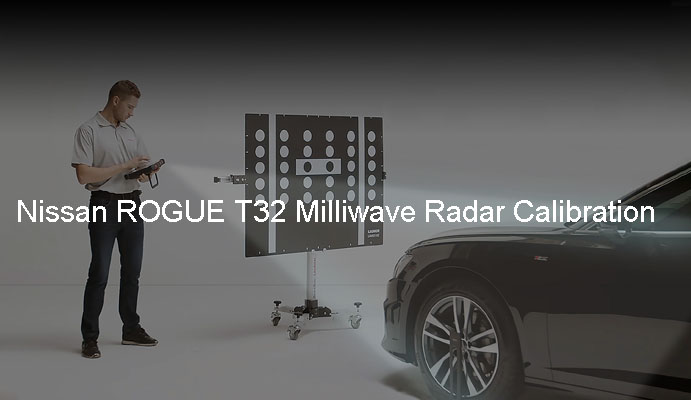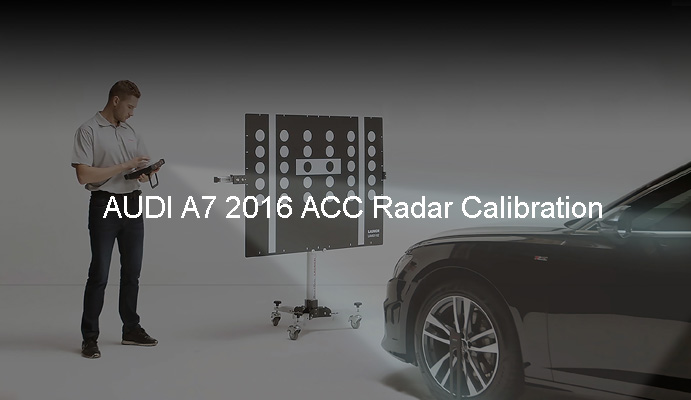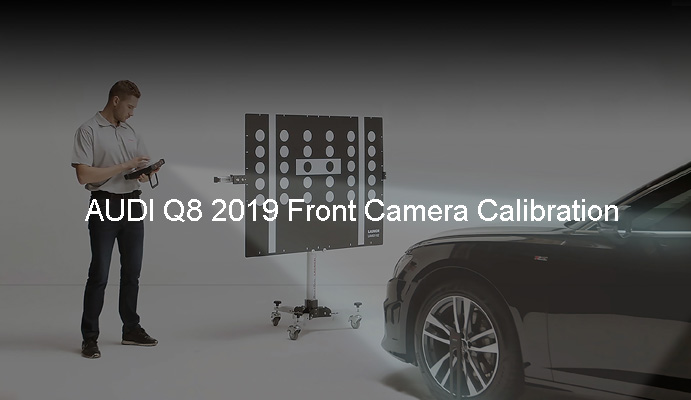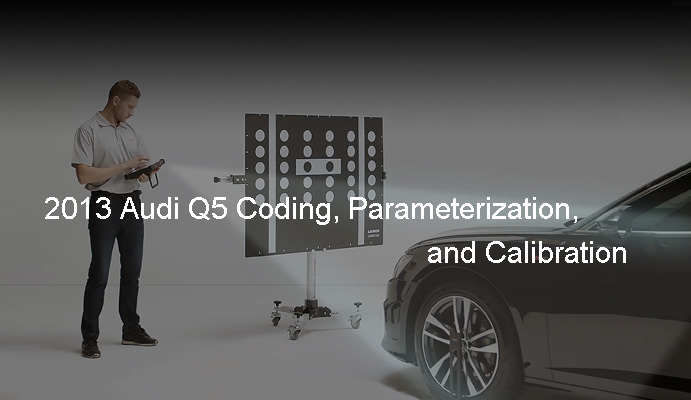With the widespread use of Advanced Driver Assistance Systems (ADAS), automotive radars play a crucial role in vehicle safety and driving intelligence. These radars are typically installed at the front and rear of the vehicle to detect the surrounding environment, such as vehicles, pedestrians, and obstacles, to support functions like Adaptive Cruise Control (ACC), Blind Spot Monitoring (BSM), and Automatic Emergency Braking (AEB). However, to ensure that the radar can accurately detect and provide feedback, regular radar calibration has become essential.
The core purpose of radar calibration is to ensure that the radar sensor's detection angle and range align with the vehicle's actual operational conditions. If the radar is displaced from its original position due to a collision, repair, or replacement, it can lead to a decrease in detection accuracy, affecting the proper functioning of ADAS features. This not only poses a potential safety risk but also significantly diminishes the driving experience.
Radar calibration usually requires specialized equipment and technical support. The calibration process mainly involves the placement of calibration targets, precise positioning between the vehicle and the target, and adjustment of calibration parameters. Through this process, it ensures that the radar’s detection area aligns perfectly with the vehicle's dynamic behavior, providing the driver with reliable assistance information.
With the continuous advancement of automotive technology, the importance of radar calibration is becoming increasingly evident. Both repair service providers and automakers should pay close attention to this process to ensure the safety and intelligence level of vehicles.
Automotive radar is one of the core sensors of Advanced Driver Assistance Systems (ADAS). It detects the surrounding environment of the vehicle by emitting and receiving radio waves. Its basic working principle is:
1. Emit radio waves
The radar sensor emits high-frequency radio waves (usually millimeter waves, with a frequency range of 24GHz or 77GHz) towards the target area. These waves travel quickly through the air and are reflected back when they encounter an object.
2. Receive the reflected signal
The radar sensor receives the signals reflected back from the target object. These signals contain information such as the target's distance, relative speed, and orientation.
3. Processing and calculation.
- Distance: The distance to the object is calculated based on the time it takes for the radio waves to travel from transmission to return.
- Speed: Through the Doppler effect, the radar can measure the relative speed of the object.
- Direction: By combining multiple signal receivers, the radar can determine the object's azimuth.
1. Short-range radar (SRR).
- Operating range: approximately 0.2 to 30 meters.
- Main applications: Blind Spot Monitoring (BSM), parking assistance, and lane change assistance.
2. Long-range radar (LRR).
- Operating range: approximately 30 to 250 meters.
- Main applications: Adaptive Cruise Control (ACC), Forward Collision Warning (FCW), and others.
Compared to cameras and LiDAR, radar has the following characteristics:
- All-weather performance: Radar is not significantly affected by lighting or weather conditions, such as rain or fog.
- Strong penetration ability: It can penetrate minor obstacles, such as light fog or slight obstructions.
- Accurate speed measurement: Through the Doppler effect, radar can directly measure the relative speed of the target, while cameras and LiDAR need to calculate it indirectly through algorithms.
- Forward Collision Warning: Real-time detection of vehicles or obstacles ahead and issuing warnings.
- Blind Spot Monitoring: Monitors the blind spots on both sides of the vehicle and alerts the driver to potential dangers.
- Adaptive Cruise Control: Maintains a safe distance from the vehicle ahead and automatically adjusts the vehicle's speed.
The efficient operation of automotive radar is the foundation of modern vehicle safety and autonomous driving technology. However, this is contingent upon the radar being precisely calibrated to ensure data reliability and the proper functioning of the system.
Radar calibration in automobiles is crucial for ensuring vehicle safety and the proper functioning of ADAS (Advanced Driver Assistance Systems). Below are the key reasons why radar calibration is important and how it is specifically reflected:
1. Impact on driving safety.
Uncalibrated radar may lead to the following issues:
- False alarms: The radar may incorrectly detect non-existent obstacles, triggering unnecessary alerts or automatic braking, which disrupts the driving experience.
- Missed detection: The radar fails to accurately detect real obstacles or dangers, causing ADAS functions to malfunction and increasing the risk of collisions.
- Reduced system reliability: Calibration errors can cause drivers to lose trust in the ADAS, thereby decreasing their reliance on the system for safe driving.
2. Regulations and standards.
In many countries and regions, the accuracy of ADAS functions is regulated by strict legal and industry standards. For example:
- European New Car Assessment Programme (Euro NCAP): When assessing vehicle safety performance, the accuracy and functionality of radar are included as key indicators.
- North American market: The National Highway Traffic Safety Administration (NHTSA) in the U.S. has specific requirements for the performance of ADAS systems.
- Chinese market: With the widespread adoption of ADAS, the industry is also developing relevant standards for radar calibration. If the radar is not properly calibrated, it could not only pose safety risks but also lead to legal liabilities for non-compliance with regulatory requirements.
3. Prevent issues after vehicle repairs.
- After component replacement: For example, after replacing parts like the bumper, front grille, or radar sensor, the radar's installation angle and detection range may be affected, requiring recalibration.
- After collision repairs: The vehicle's frame and sensor positions may experience slight shifts. Calibration ensures that the radar aligns with the original manufacturer standards.
- Regular maintenance: Over time, vehicle vibrations or environmental changes may affect the position of the radar sensor. Calibration helps restore optimal performance.
Radar calibration not only directly impacts the safety of the driver and passengers but also determines the reliability of the ADAS system in critical moments. Whether it's routine maintenance or post-repair checks, ensuring that the radar sensor is properly calibrated is an essential step.
Automotive radar calibration is a critical step to ensure the accuracy and reliability of the vehicle’s radar system. Calibration is typically required in the following situations:
1. After collision repairs.
Even minor collisions can cause shifts or misalignments of the radar sensor. Calibration ensures that:
- The sensor is properly aligned with the vehicle's axis.
- The accurate operation of ADAS functions such as adaptive cruise control and collision warning is restored.
2. After replacing vehicle components.
When replacing vehicle components such as the bumper, front grille, or radar sensor, calibration is essential because:
- The new parts may alter the position of the radar sensor.
- The sensor's detection angle or range may change as a result.
3. When installing or upgrading the ADAS system.
When installing or upgrading ADAS functions, radar calibration is a crucial step to ensure the proper operation of the new system. This step helps align the sensors with other components like cameras or LiDAR, preventing errors in the integrated system.
4. During regular maintenance.
As part of regular vehicle maintenance, radar calibration helps to:
- Ensure that the sensors remain properly aligned after prolonged use.
- Compensate for slight misalignments caused by vehicle vibrations or environmental factors.
Radar calibration is a proactive maintenance measure that helps prevent system errors and ensures the accuracy of radar-related functions. Whether it's due to structural changes, post-repair inspections, ADAS upgrades, or routine maintenance, calibration is an essential step to ensure safety and system performance.
Radar calibration is crucial for ensuring the accuracy of ADAS (Advanced Driver Assistance Systems), but the process also faces the following challenges:
1. High precision requirements.
Radar calibration requires extremely high precision because even the slightest error can lead to:
- ADAS function malfunctions: Such as failures in adaptive cruise control or lane departure warning systems.
- False alarms or missed detections: Incorrectly triggering alerts or failing to detect hazards, which could impact driving safety.
2. Equipment and costs.
- High equipment costs: Professional radar calibration equipment is expensive, which may be difficult for small repair shops to afford.
- Insufficient equipment availability: Not all repair shops are equipped with the latest calibration systems, which may limit their ability to service modern vehicles.
3. Technical complexity.
- High technical requirements: Radar calibration requires skilled technicians with a deep understanding of vehicle systems.
- Significant training requirements: Technicians must undergo detailed training to operate calibration equipment proficiently and follow specific procedures for different manufacturers.
Radar calibration requires specialized tools and equipment to ensure accuracy and reliability. Below is an overview of common equipment, comparisons between different brands, and future development trends:
Common calibration equipment on the market.
- Static calibration systems: These use fixed calibration boards, reflectors, and other tools to precisely align radar sensors.
- Dynamic calibration tools: These are used for calibration during real-world road tests, adjusting radar settings while the vehicle is in motion.
- Multi-functional calibration stations: Integrated devices that combine radar, camera, and other ADAS sensor calibration functions.
- Portable calibration equipment: Compact and mobile solutions, ideal for small repair shops or on-site operations.
Here are some recommended ADAS calibration devices for automotive radar calibration:
① ADAS PRO+ ADAS Calibration Tool:ADAS PRO+ calibration tool enables you to effectively and accurately calibrate various types of camera and radar driving assistance systems.
② ADAS MOBILE ADAS Calibration Tool:ADAS MOBILE ADAS calibration tool is exclusively intended for use on a vehicle. Foldable kits and small-sized panels can fit in the vehicle’s trunk.
③ ADAS LITE ADAS Calibration Tool:ADAS LITE calibration tool enables you to effectively and accurately calibrate various types of camera and radar driving assistance systems.
Return



